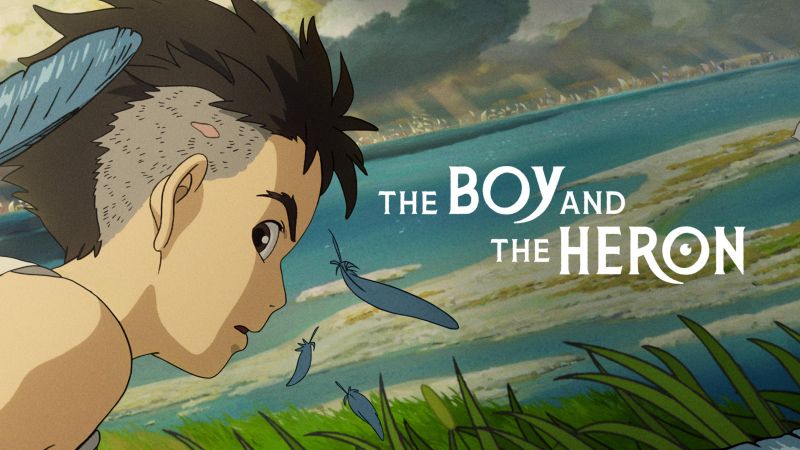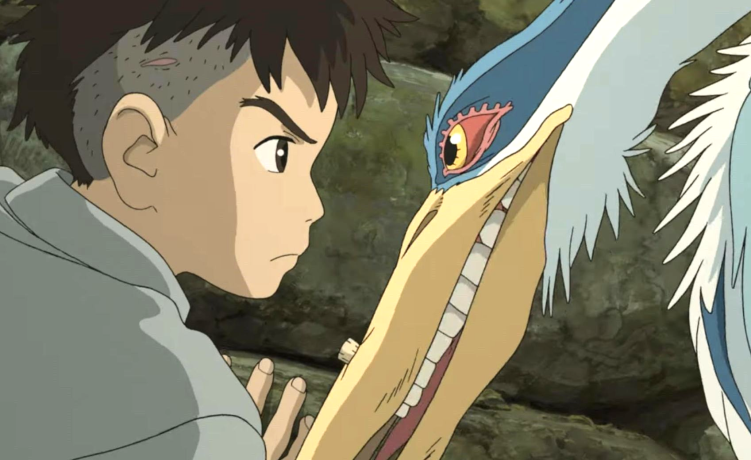As of now, “The Boy and the Heron,” the latest film by Hayao Miyazaki, has been seen by 1.3 million people in France, marking his biggest success there after its significant reception in Japan. While 1.3 million is impressive, it’s worth considering how many viewers left the theater feeling disappointed or confused. This is why I believe it is important to explore and analyze the various messages embedded within this film. It touches on themes of death and acceptance, inheritance, but also hints at other underlying messages that might reflect Miyazaki’s somewhat self-centered and even arrogant personality, as well as a pessimistic outlook for Studio Ghibli’s future. Could the creator of Totoro be subtly signaling the end of his studio? This possibility exists…
Incidentally, in an interview from a few years ago, when production of “The Boy and The Heron” had begun, Toshio Suzuki, one of the three key figures at Studio Ghibli, revealed that Hayao Miyazaki wanted to create this final film not only for his grandson. This was almost like leaving behind a prophetic message, recognizing that his grandfather was about to transition into another phase but would leave this film as a legacy for him because he loved him deeply. It reflects a sentiment of not departing with unresolved issues, coming from someone who had previously struggled in his role as a father towards his son, Goro Miyazaki, whom he did not fully acknowledge earlier. This can be seen as a form of redemption and an assumed inheritance, given that one of the central themes of “The Boy and The Heron” is the transition from life to death, the existence of a possible afterlife, not necessarily in terms of reincarnation but rather through the concept of parallel worlds or a multiverse, similar to what has been popularized by Marvel recently. These ideas suggest that there might be other versions of our lives being lived simultaneously in alternate timelines. The film addresses all these topics, highlighting the critical role of spirituality within its narrative. Interpretations may vary based on individual beliefs, but certain messages remain clear, particularly those warning about the end of a world within the context of the film and possibly hinting at the impending conclusion of Studio Ghibli’s era under Miyazaki’s leadership…
Cursed Year 2013
In 2013, a significant year for Studio Ghibli, two major films were released by its founding members but did not achieve the expected commercial success. “The Wind Rises” earned $137 million worldwide, whereas “Princess Kaguya” grossed only $27 million, substantially less than the $400 million generated by “Spirited Away” and “Howl’s Moving Castle.” In response to these outcomes, Studio Ghibli announced in August 2014 its intention to pause production of new animated films. This decision follows a trend among American studios such as Disney and DreamWorks, which focus exclusively on 3D animation due to its ease and speed compared to traditional hand-drawn 2D animation. Hayao Miyazaki is opposed to using 3D in animation; he experimented with it several years ago for the production of “Boro the One-Horned Dragon,” intended for the Ghibli Museum, but ultimately declined any further computer-assisted work due to its complexity. This project was handed over to his son, Gorō Miyazaki, whose relationship with Hayao is known to be complex. While details about Hayao Miyazaki’s personal life remain private, it is noted that communication between the two men is limited.
GORO, THE REJECTED AND HUMILIATED SON
Today, at 56 years old, Goro Miyazaki, an architect by training, transitioned to animation within the Ghibli studios when Toshio Suzuki offered him the position of directing the Ghibli Museum in Mitaka. After several refusals, he eventually accepted in 2001 and began working alongside his father. It is known that Goro Miyazaki has always resisted following in his father’s footsteps, but once again, it was Toshio Suzuki who convinced him in 2005 to take on the adaptation of “Tales from Earthsea,” a project Hayao Miyazaki had wanted to realize for over two decades. After reviewing Goro’s sketches, Suzuki eventually entrusted him with directing the film, as the primary goal was to find a successor to Hayao Miyazaki and Isao Takahata, the pillars of Studio Ghibli.
As of the time this is being written, “The Boy and The Heron,” Hayao Miyazaki’s latest film, has been watched by 1.3 million people in France, marking his biggest success there as a master of Japanese animation. While this number is significant, it raises questions about how many viewers were left disappointed or confused by the film. This prompted an analysis of the various messages embedded within the movie, which discusses themes such as death and acceptance, along with hints at Miyazaki’s possibly self-centered personality and pessimistic outlook on Studio Ghibli’s future. Is Miyazaki subtly signaling the impending decline of his studio? Likely so…
As of now, “The Boy and the Heron,” Hayao Miyazaki’s latest film, has been seen by 1.3 million people in France, marking his biggest success there to date. This figure is impressive, but it also prompts questions about whether some viewers left the theater disappointed or failed to grasp its deeper meanings. Consequently, I have chosen to explore and break down the various messages embedded within this film. It discusses themes like death, acceptance of mortality, inheritance, and possibly a multiverse concept. Among these themes are indications that reflect Hayao Miyazaki’s somewhat self-centered, even arrogant personality, as well as a pessimistic outlook on the future of Studio Ghibli. Is the creator of Totoro subtly signaling the impending end of his studio? It is plausible…
THE MOST PERSONAL FILM
Let us briefly revisit the mixed reception of “The Boy and the Heron” from both audiences and critics. One criticism directed at the film is its pacing, as it takes some time for the story to truly engage viewers. Miyazaki’s film runs for 2 hours and 3 minutes, yet it requires at least 45 minutes before the narrative fully unfolds and Mahito enters the parallel, fantastical world, revealing what is often described as Miyamoto’s magical realm. However, if the filmmaker chooses to take his time in telling this story, there are several reasons for doing so.
In the film, Mahito discovers a book titled “How are you living?” which contains writing by his mother, intended for him when he was older. This creates a meta-connection between the two works, as Mahito’s discovery of the book is pivotal, occurring immediately after he self-harms with a stone in an outburst of anger that channels his aggressive héron-like side and leads to new emotions and a path to another world. Viewers must also endure 45 minutes before being transported to this magical world. Beforehand, they are introduced to Mahito’s daily life, his anger, and his anti-social behavior, which contrasts with the characters typically portrayed by Miyazaki.
“The Boy and the Heron” is more than just another film from Studio Ghibli; it represents Hayao Miyazaki’s personal farewell to the world during his lifetime and serves as a cautionary message for the studio’s future. Near the end of the movie, Mahito leaves with a small carved figure, reminiscent of the souvenirs impulsively bought in official Ghibli shops. This figurine encapsulates Miyazaki’s distinctive imagination and visual style, which may disappear along with him. Indeed, Hayao Miyazaki is recognized as a genius, a fact he acknowledges himself, but at what cost?
For those eager to delve deeper into the enchanting world of “The Boy and the Heron,” Carlos Mendoza’s insightful article from August 29, 2023, offers a comprehensive look at Hayao Miyazaki’s final 2D animated film. Discover the captivating story behind Mahito, an 11-year-old boy navigating life after his mother’s untimely death, and the mysterious heron that guides him through its magical mysteries. Meticulously crafted since 2020, with one minute of footage produced each month, this labor of love is set to captivate audiences when it premieres in France on November 1st, 2023. Dive into the unseen footage and explore why “The Boy and the Heron” marks a significant milestone for Miyazaki [Read the article].
Have any thoughts?
Share your reaction or leave a quick response — we’d love to hear what you think!



